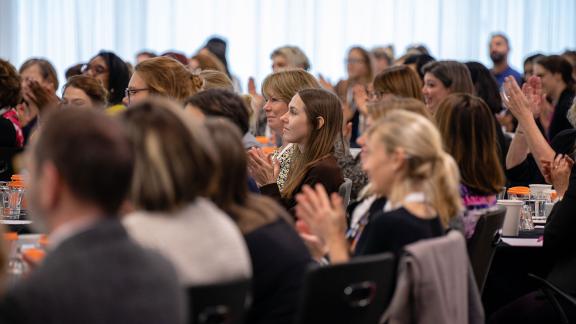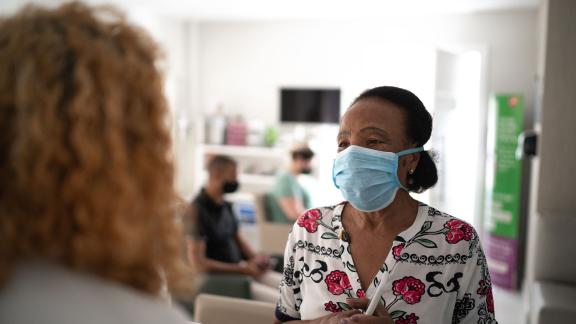Working with BT to deliver remote digital care in Birmingham
The RDS combines digital and remote medical devices with a converged network to bring together clinicians over two hospitals to deliver the best care for citizens in Birmingham.
Background
University Hospitals Birmingham (UHB) is the largest NHS trust in the UK, treating more than 2.8m patients across its hospitals, clinics and community health premises each year. Many of UHB’s patients need to be seen in hospital face to face by different specialists, across different appointments, over multiple weeks.
When UK cases of COVID-19 began increasing in March, the trust needed to explore solutions that would enable it to continue delivering expert care to the community while protecting both patients and staff from the risks associated with the virus.
What the organisation did
UHB had an existing partnership with BT, having worked together over the previous 18 months to develop the Connected Ambulance, which enables paramedics to deliver diagnostics such as remote-controlled ultrasound scans, while being supported by clinicians based in the hospital.
Building on this partnership, UHB worked with BT to develop a remote diagnostic station (RDS). The RDS combines digital and remote medical devices with a converged network to bring together clinicians over two hospitals to deliver the best care for citizens in Birmingham. The RDS uses digital stethoscopes and ECGs so that clinicians can work remotely with multi-disciplinary teams to review and diagnose patients in real time.
The RDS is being trialled in UHB’s Norman Power Centre, which is an off-site, purpose built advanced assessment unit providing intermediate care for patients who are preparing to return home.
UHB and BT set up a workstation in the centre, which connects to another workstation in the Older People's Assessment and Liaison (OPAL) department, located in Queen Elizabeth Hospital Birmingham.
If a member of the team working at the Norman Power Centre has concerns about a patient, they can be linked via video to the OPAL team to discuss the case with a geriatrician, diagnose the patient in real time and provide advice on the treatment plan. For example, if a nurse notices shortness of breath in a patient, a geriatrician could carry out a clinical examination by using a digital stethoscope to hear the patient's breathing.
The trial compliments UHB’s ongoing outpatient video consultation activity, which was expanded in recent months to provide clinical expertise away from the trust’s hospitals.
Results and benefits
- Better patient outcomes through enhanced remote triage by multi-disciplinary teams.
- Improved patient experience by enabling quicker discharge back to their own home.
- Reduction in unnecessary admissions.
- Reduction in travel.
- Increased productivity and additional capacity.
- Enhanced wellbeing of NHS staff.
- Supporting social distancing through reduced face-to-face consultations.
- Accessible care in the community and in the home.
- Increased teamwork across healthcare providers and settings.
- Empowered patient side team.
More widely, whilst it delivers significant benefits during COVID-19 in reducing the number of clinicians at the bedside and maintaining social distancing guidelines, the RDS has long-term benefits beyond the pandemic and is being considered across a wider range of healthcare settings including GPs, care homes and community clinics.
This is not a one-size fits all model and provides an open platform that will enable multiple organisations to come together within the healthcare sector and the wider community.
Challenges
The success of the solution was dependent on working directly with the clinical teams, who were under an enormous amount of pressure during the pandemic.
It was critical to continue working closely with them – from selecting the devices in the first place, to how they came together as a solution - so that the resulting solution worked for those who would be using it.
BT adapted its approach and maintained flexibility to continually align with the teams and to gain as much feedback and insight during that period as possible. Feedback sessions were carried out through remote training and demo days and regular feedback calls.
This co-creation meant that UHB understood that BT shared their goal of enabling healthcare out into the community, so there was a willingness for clear lines of communication from the outset.
When setting up the service, BT was aware that its users would be clinicians, not technicians. The technology needed to be intuitive and easy to pick up and use from the start, without in-person training, by a broad spectrum of medical practitioners, both in the hospital and out in the community. As a result, the solution can be managed remotely, so support can be provided very quickly to clinical users.
Key learning
- This type of technology can bring benefits across the wider health and care sector and has long-term benefits across a range of healthcare settings including GPs, care homes and community clinics.
- Co-creation and collaboration are essential.
- Embrace an agile approach to delivery – it’s important to be open minded about making necessary changes to continuously improve the solution as it develops and enacting rapid prototyping to test along the way.
- Technology needs to be incredibly intuitive and easy to use, without in-person training, by a broad spectrum of medical practitioners, both in the hospital and out in the community.
Takeaway tips for other trusts
- Start by being specific with what you want to achieve and build out from there. Pinpoint where the biggest benefit is going to be and be clear in your goals.
- Identify someone to drive forward the project and get senior stakeholder buy-in to embed the solution in your organisation.
- Cascade an innovative mindset throughout your organisation, encouraging an overall cultural shift to embrace change.



